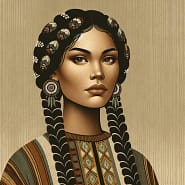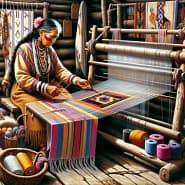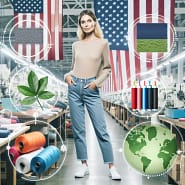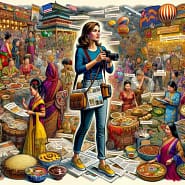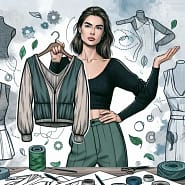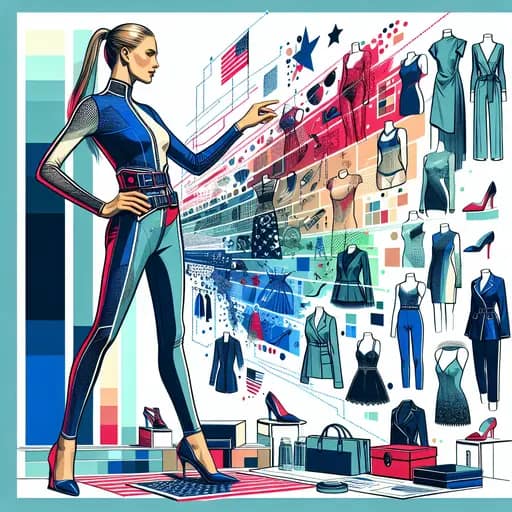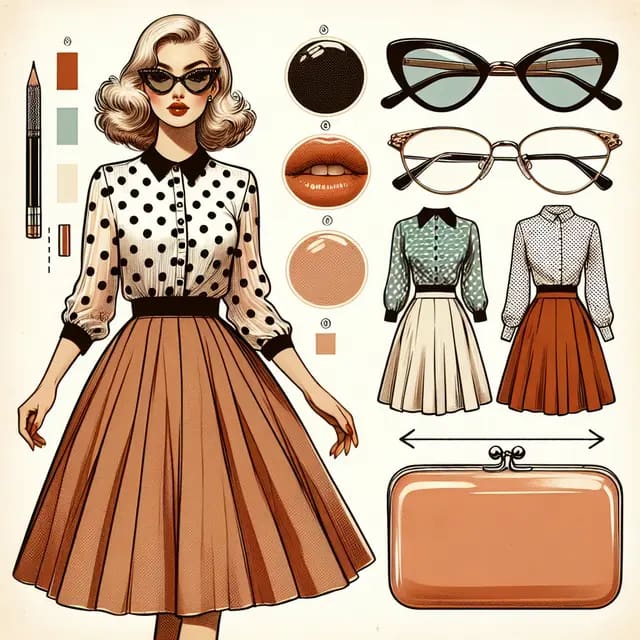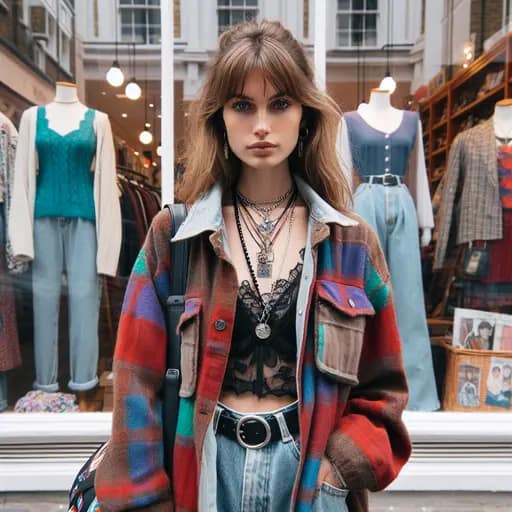Introduction: The ever-changing world of fashion
The realm of fashion is one that is constantly evolving, regularly presenting us with new trends and styles that permeate our culture and color our world. The concept of fashion trends is like a kaleidoscope — changing its pattern with the slight flick of a wrist. This introduction will help us prepare as we journey together to predict the next big trends in this ever-changing world of fashion. Within this article we will explore:
- The innovative movements in sustainable fashion.
- The significant role of technology in eliciting fashion trends.
- The growing inclusion of cultural diversity in fashion narratives.
- The rise and acceptance of gender-neutral and unisex fashion.
- The impact of social media platforms in molding fashion trends.
- The resurgence and popularity surge of retro and vintage styles.
The article serves as an exploration into, and a prediction of, the future of the fashion industry. We delve not only into the trends we wear but also the undercurrents that influence and dictate these trends such as technology, sustainability, diversity, inclusivity, and more.
Fashion has a critical role to play in presenting our personal identities to the world and predicting trends is akin to forecasting our future cultural climate. If you’re intrigued by this dynamic industry, fascinated by trendsetting, or even curious about what’s coming next – read on. Because the future of fashion waits for nobody, and it’s about time we catch up.
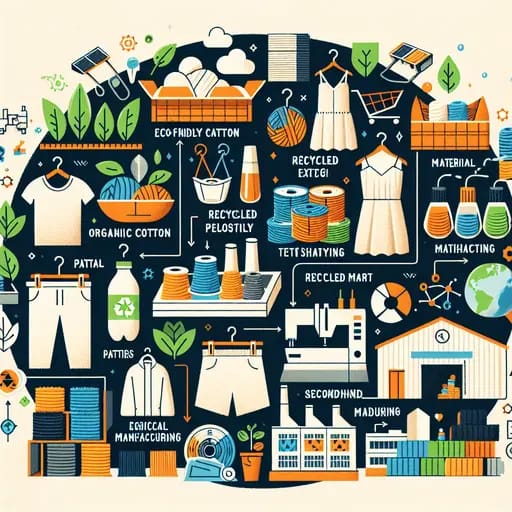
Innovations in Sustainable Fashion
The rapidly evolving fashion industry is consciously shifting towards sustainable practices, which are no longer considered merely a niche, but a necessity. The impact of fashion on the environment can be significantly reduced with these innovative and trending practices designed to favor sustainability, thus aligning fashion trends with environmental needs. Key innovations in sustainable fashion include:
- Use of Eco-friendly Materials: Brands are striving to use eco-friendly materials like organic cotton, recycled polyester, and natural dyes to create their collections, significantly reducing the strain on our environment.
- Zero Waste Design Techniques: Zero waste is a design strategy that completely eliminates textile waste through pattern making. This has been adopted by numerous fashion brands and designers all over the world.
- Ethical Manufacturing: Sustainable fashion also implies fair labor practices. Thus, companies are ensuring that their products are manufactured in good work conditions with fair wages.
- Rental and Secondhand Market: The fashion industry is revolutionizing with the concept of renting clothes and buying secondhand. This tackles the problem of fast fashion and extends the life of a garment.
- Technology Integration: Technology is innovatively used in sustainable fashion, employing AI to recycle clothes or use 3D printing to reduce material waste.
Fashion brands and consumers equally play a critical role in this shift towards sustainability. The culture of ‘buy-use-dispose’ is being replaced by thoughtful purchasing and a focus on the quality and longevity of products. Hence, the next big trends in fashion will undoubtedly be dominated by sustainable concepts, designs, and initiatives. By engaging with these practices now, we can contribute to a more sustainable and ethical world of fashion.
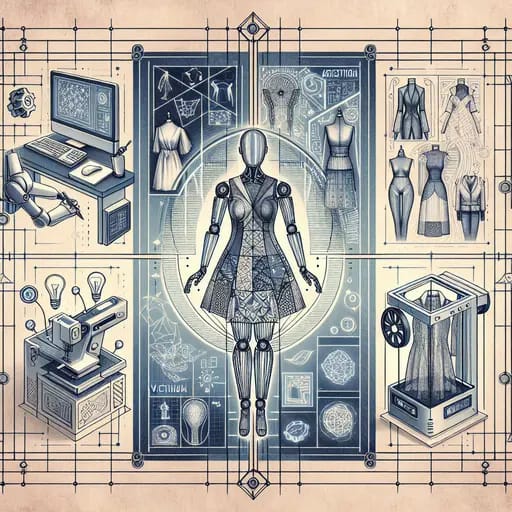
The Influence of Technology on Fashion Trends
As we explore how we are Predicting the Next Big Trends in Fashion, we cannot sidestep the remarkable impact of technology on this transformative journey. Technology has dramatically revolutionized the fashion industry, making predictions accurate, efficient, and worthwhile. It has morphed fashion designing, retail, and modeling into a tech-savvy, innovative industry ready for the challenges of the digital age. Here are the key ways technology influences fashion trends.
- Digital Design: Computer-aided design (CAD) software has made the designing process more accurate and time-efficient. Designers can use these tools to create precise and intricate designs, forecast future trends, and make amendments with minimal waste.
- Artificial Intelligence (AI): AI helps in predicting future trends and consumer behavior, thereby allowing fashion retailers to provide personalized offerings. These predictions pave the way for the creation of novel designs based on consumer preferences, thereby instigating new trends.
- Virtual Reality (VR) and Augmented Reality (AR): Both VR and AR have redefined the consumer experience. Brands now provide virtual fittings and online shopping experiences that closely mimic physical shopping, impacting fashion trends by showcasing worldwide trends more accessibly.
- 3D Printing: This technology has opened new doors for creativity and precision in fashion. With 3D printing, designers can create intricate and personalized designs effortlessly. It not only fosters innovation but also propels trends that prioritize customization.
This fusion of fashion and technology transforms all facets of the industry, making trend prediction an evolving digital art. The intersection of tech and fashion ensures the industry remains dynamic, compelling, and on the cutting edge of modernity. Stay tuned as we delve into the significance of cultural diversity and inclusivity in the fashion industry in our next topic.
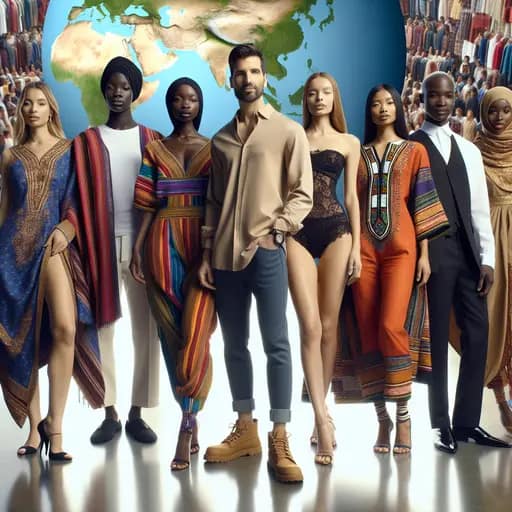
Cultural Diversity and Inclusivity in Fashion
In the globalized setting of the fashion industry, cultural diversity and inclusivity bear enormous influence on emerging trends. The increasing recognition of various cultures and a broader spectrum of beauty standards has gradually transformed the fashion world’s fabric. The industry is shifting closer to being a real reflection of our multifaceted, multicultural society.
- Global Influence: Cultural diversity in fashion is about sharing and representing different traditions. Designers now integrate items, patterns, and styles influenced by different cultures worldwide into their collections, bringing global culture to mainstream fashion scenes.
- Inclusivity in Design: Brands have become more conscious about making all people feel represented and included. We now see models of different age groups, sizes, ethnicities, and abilities showcasing high fashion. It signifies a shift towards universal design concepts, promoting fashion for all.
- Bridging the Gap: As the doors to diversity widen, it acts as a bridge between consumers and the fashion world. It fosters a sense of acceptance, where everyone is seen, heard, and valued, thus positively affecting fashion trends.
Indeed, the blossoming trend of cultural diversity and inclusivity in fashion is vital in predicting the next big things in fashion. By continuing this progressively inclusive journey, we can expect an industry that transcends conventional boundaries and truly serves the diverse world we live in.
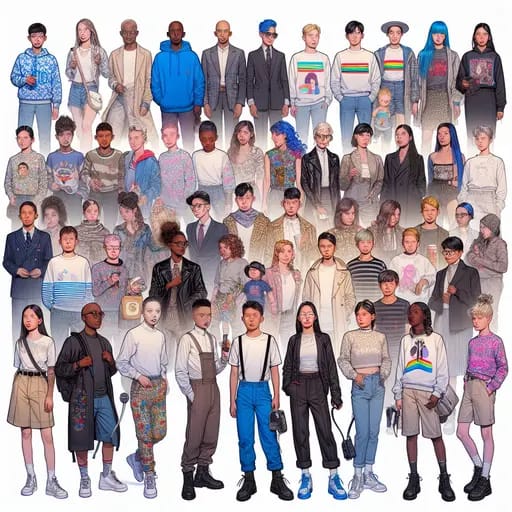
The rise of gender-neutral and unisex fashion
As we watch the ever-evolving landscape of the fashion industry, a significant shift is undeniable – the rise of gender-neutral and unisex fashion. This surge goes beyond just an adjustment in clothing cuts or designs. It reflects an increasingly fluid societal perception of gender roles and identity. Equal, diverse, and inclusive, this trend is reshaping the fashion landscape like never before. Let’s dive into the heart of this fascinating trend:
- Breaking Down Stereotypes: No more blue for boys and pink for girls. The move towards gender-neutral fashion is about dismantling these deeply ingrained societal norms and challenging gender-based stereotypes.
- Defining Identity Beyond Gender: Unisex fashion embraces the idea that clothing doesn’t define one’s gender identity. It seeks to offer more freedom and flexibility in expressing one’s individuality.
- The Influence of Celebrity Endorsers: High-profile celebrities endorsing gender-neutral clothing lines have played a significant role in promoting this trend.
We’re seeing many major brands and designers readily embracethis new-era fashion. In London Fashion Week 2020, for example, numerous designers introduced gender-inclusive clothing lines. But the ripple effects of this trend don’t stop in high fashion. They extend to children’s wear, streetwear, and even corporate attires.
Yet, we’re only scratching the surface of what’s achievable. Transitioning from a traditionally binary fashion industry to a more inclusive one is neither easy nor immediate. It requires time, effort, and a steadfast commitment to equality and diversity. But the wheels are in motion, and there’s no denying that the rise of gender-neutral and unisex fashion is a significant step towards a more inclusive and equitable future in fashion.
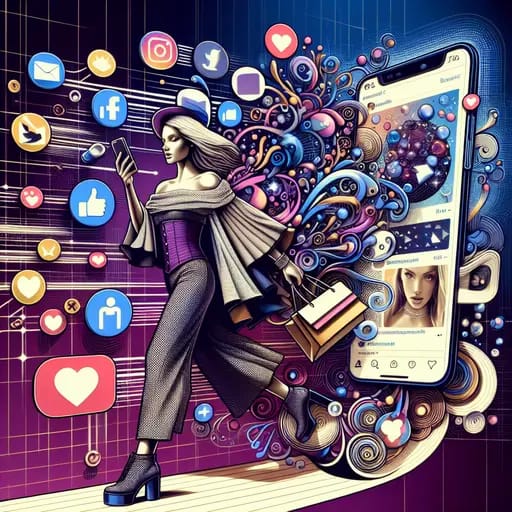
The Impact of Social Media on Shaping Fashion Trends
As the digital age continues its rapid expansion, social media has emerged as an unexpected powerhouse in dictating fashion trends. It’s providing brands with innovative ways to reach consumers and influencing how style and fashion evolves. More than mere platforms for sharing images and reaching out to old classmates, social media networks have become pivotal to the way the fashion industry operates.
– Fast Fashion: Social media has fostered the ‘see-now, buy-now’ culture. Platforms like Instagram, Facebook, and Pinterest have made it incredibly easy for consumers to spot a trend they like and instantly find a place to purchase it online. This has given birth to the culture of fast fashion, with trends shifting at a lightning speed.
– Influencer Impact: Nowadays, influencers and fashion bloggers have the power to establish what’s ‘in’. They take to Instagram, YouTube, and TikTok to display fashion hauls, trend analyses, and outfit inspirations, shaping consumer choices in the process. The followers of these influencers often make purchases according to the trendsetter’s recommendations.
– Direct Engagement: Brands now have the opportunity to engage with customers directly through social media platforms. This two-way communication has allowed companies to understand what consumers want – helping to shape the next big trend.
– Customized and Personalized Reach: Social media has made it easier for brands to reach their consumers on a more personal level. Campaigns can be tailored to specific demographics based on user profiles, further influencing the fashion trend landscape.
– Real-time Feedback : With real-time reactions and comments, brands can determine how well a product or trend is expected to perform. Consumers can voice their opinions instantly – giving valuable insights into public preferences.
In summary, social media has not only changed how brands produce and market fashion trends, but also how consumers perceive and consume these trends. Hence, the next ‘big thing’ in fashion might just be a viral post away.
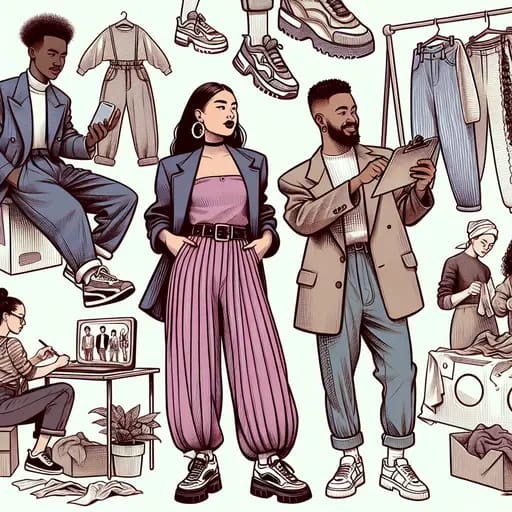
The resurgence of retro and vintage styles
In the constantly evolving realm of fashion, the return of retro and vintage style, or what we define as “everything old being new again,” has been a perpetual phenomenon. Today, the sight of high-waisted, pleated jeans, chunky sneakers, or oversized blazers does not feel out of place; interestingly, these trends dominated fashion runways and streets alike a couple of decades ago.
The resurgence of vintage fashion can be attributed to several factors:
- Nostalgia: The pull of the past is always strong, with feelings of nostalgia evoking a sense of comfort and familiarity. People often associate certain fashion styles with good times, so there’s a wish to revive those memories.
- An expression of personality: Vintage and retro outfits give an opportunity to show off personal tastes and uniqueness.
- Sustainability: Retro and vintage clothing is often perceived as a more sustainable choice compared to fast fashion.
The fashion industry is also tapping into this phenomenon utilizing various techniques:
- Digitization: Many retailers are using technology to digitize their vintage collections and exhibit them online, bringing old styles back to popularity.
- Recycling: Companies are reusing old materials and designs, lending a vintage look to their new collections.
- Collaboration: There are many collaborations with fashion icons who were influential in previous decades.
The allure of retro and vintage fashion is not just a fad. It draws upon our collective cultural memory, an expression of personal identity, a desire for sustainability, and an affordable choice. So, while we are eagerly forecasting upcoming fashion trends, sometimes, it’s valuable to take a look back.
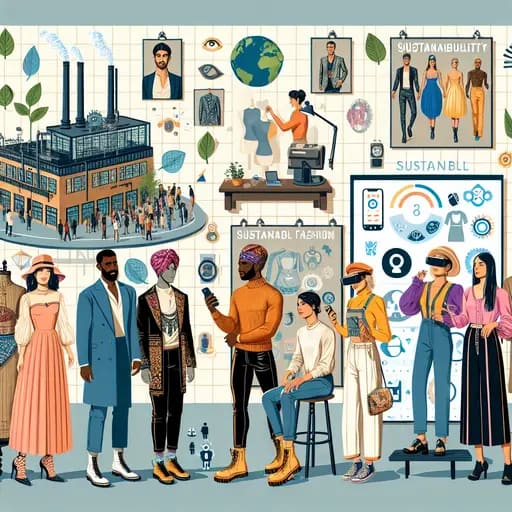
Conclusion: Embracing the Future of Fashion
The fashion industry is as dynamic as it is captivating, continuously adapting to fit the world’s changing tastes, values, and socio-economic landscape. Consequently, it is crucial for both consumers and stakeholders to stay ahead of the curve, understanding and predicting the next big trends in fashion.
- Adaptive thinking and sustainability: As we have noted, the urgent need for sustainable fashion remains relevant and is predicted to greatly influence future trends. Brands must reevaluate their manufacturing processes, ensuring they align with an eco-friendly vision, and offering sustainable options to consumers.
- Technological advances: Technology plays an undeniable role in this evolution. From virtual reality dressing rooms to AI curated shopping experiences, technology will continue to revolutionize the way we interact with fashion.
- Inclusivity and diversity: Diverse cultural influences and values have been shaping the fashion landscape, leading to a move away from homogeneity towards greater inclusivity. This will continue to guide future fashion trends, as more and more brands work to express and appreciate a broad spectrum of cultural identities.
- Unisex fashion: The focus on gender-neutral and unisex fashion is another pivotal trend, viewers have increasingly expressed a desire for less restrictive clothing categories. Influencers and brands should take note and strive for more inclusive fashion narratives.
- Social media: Social media will continue to serve as a major platform for brands and influencers to connect with consumers, showcasing their products and defining trends. This medium not only allows quick dissemination of information and trend inception but also facilitates dialogue and engagement.
- Retro resurgence: The return of retro and vintage styles, a testament to the cyclical nature of fashion, has seen many brands exploring past decades for inspiration. We anticipate this trend will hold steady as both designers and consumers find comfort in nostalgia during uncertain times.
In conclusion, these emerging developments in fashion hint at a future that’s more inclusive, sustainable, technologically advanced, and individualistic. Importantly, it underscores the importance of being flexible and adaptable in a rapidly changing industry. Let’s embrace an exciting future, where fashion serves not just as an aesthetic tool, but the expression of shared values and cultural evolution.


